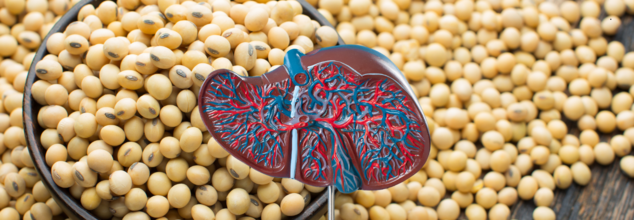- Health Conditions A-Z
- Health & Wellness
- Nutrition
- Fitness
- Health News
- Ayurveda
- Videos
- Medicine A-Z
- Parenting
- Web Stories
Best Home Remedies To Prevent From Getting Seasonal Fevers

October, the fall season is sweet and chilly and filled with festivities. But it is another thing too, the transitional period to the winters. This means the dust will be on the rise, with that, there will be viruses and bacteria. Cases of cold, flu, fevers, and coughs will now be more noticeable than ever.
Experts from time and again have pointed out that this seasonal transition increases susceptibility to infections in people of all ages. However, children and the elderly are more vulnerable. The season therefore calls for extra caution about health. Doctors also suggest getting enough sleep and hydrate to maintain hygiene and a strong immune system.
What Can You Do At Home?
There are several things you can consume to prevent seasonal fevers.
Ginger And Honey
They are the best combination of antioxidants and antivirals that help in relieving colds and coughs. It can be consumed twice a day and can provide relief from sore throat.
Turmeric Milk
Almost an old "nuskha" (recipe) to combat inflammation. It has powerful anti-inflammatory and antiseptic properties. You can consume half a teaspoon of turmeric in a glass of hot milk.
Tulsi And Ginger Tea
It is made from basil and ginger and is effective in relieving cold and cold. Basil leaves can be boiled in water and mixed with ginger powder. It helps to alleviate symptoms of congestion and sore throat.
Cloves And Black Pepper
You can use cloves and black pepper as it have antibacterial properties that help in the reduction of throat infections. Adding them to tea can help soothe the throat and reduce irritation.
Vitamin C-rich Foods
Vitamin C is a great source to boost immunity. Therefore it is essential to include vitamin C-rich foods like oranges, lemons, and amla, which strengthen the immune system and helps fend off infections.
What Is Seasonal Fever?
As per the World Health Organisation (WHO), seasonal fevers are the sudden onset of fever, cough (usually dry), headache, muscle and joint pain, severe malaise (feeling unwell), sore throat and a runny nose. It can also lead to a high body temperature in many cases.
What Happens To Your Liver When You Consume Soybeans?

Credits: Canva
Soybeans are widely celebrated for their high protein content, especially among those on plant-based diets. But beyond being a protein powerhouse, soybeans also contain a wealth of nutrients and bioactive compounds that play a vital role in maintaining liver health.
With rising concerns around fatty liver disease, cirrhosis, and liver-related conditions, including soybeans in your diet could be a simple, natural step toward better liver function. Here’s how this humble legume works to support one of the body’s most important organs.
A Natural Source of Liver-Supporting Protein
One cup of boiled soybeans (about 172 grams) offers roughly 31 grams of protein. The main proteins in soybeans—glycinin and conglycinin—account for around 80% of that content. These aren’t just for building muscle; they support lipid metabolism and enzyme activity, two processes that are central to how the liver breaks down fats, regulates hormones, and processes nutrients.
Additionally, these proteins provide essential amino acids that are critical for the repair and regeneration of liver cells. This helps ensure the liver continues to perform its detoxifying functions efficiently.
Reduces Liver Damage
Soybeans are rich in isoflavones, plant-based compounds known for their antioxidant effects. These antioxidants work to reduce oxidative stress, which is a major contributor to liver cell injury and long-term liver damage.
Isoflavones also help regulate apoptosis—the process of programmed cell death—which is essential for removing damaged cells but harmful when it happens excessively. By balancing this process, soy isoflavones help protect healthy liver cells from being destroyed.
Improves Fat Metabolism in the Liver
Another liver-friendly compound found in soybeans is lecithin. Lecithin plays an essential role in the breakdown and transport of fats, helping the liver manage its fat content more effectively. It boosts the formation of lipoproteins, which help move fat out of the liver and through the bloodstream, thereby reducing the risk of fatty liver disease.
Research has also shown that soy lecithin can lower total cholesterol and triglyceride levels, while increasing HDL (“good”) cholesterol, further easing the burden on the liver. In addition, lecithin contributes to the regeneration of cell membranes and helps prevent liver fibrosis, a condition where liver tissue becomes scarred.
Combats Inflammation
Soybeans also contain saponins, plant compounds with powerful anti-inflammatory and antioxidant properties. These compounds help protect liver cells from toxic substances such as carbon tetrachloride and acetaldehyde—a harmful byproduct of alcohol metabolism that can lead to liver scarring and cirrhosis.
By neutralizing these toxins, saponins act as a shield for liver cells, preserving their structure and function.
Boosts Overall Liver Function
- Soybeans are a natural source of vitamins E, K, and B6, all of which are vital for liver health.
- Vitamin E protects the liver from oxidative damage.
- Vitamin K supports bile production and blood clotting.
- Vitamin B6 is essential for protein metabolism and enzyme function.
- These nutrients contribute to the liver’s ability to process waste, metabolize nutrients, and regulate energy.
Lifestyle Matters, Too
While soybeans can offer excellent support for liver health, they work best as part of a balanced lifestyle. Limiting alcohol intake, avoiding smoking, eating plenty of vegetables and lean proteins, staying physically active, and going for regular health checkups all enhance liver function.
Some natural herbal extracts like milk thistle (silybum marianum) and wasabia extract have also been studied for their ability to support detoxification and improve liver resilience.
4 Foods That People With Fatty Liver Must Avoid Eating

Credits: Canva
Fatty liver disease is increasingly common worldwide, and while it may start off without noticeable symptoms, ignoring it can lead to serious complications. The liver plays a vital role in processing nutrients, detoxifying the body, and managing fat. When fat accumulates in liver cells faster than it can be metabolized, it can disrupt these crucial functions—potentially leading to hepatitis, cirrhosis, or even liver cancer if left untreated.
Fortunately, fatty liver in its early stages is often benign and reversible. Through a combination of medical care and simple but consistent lifestyle changes, many people can manage or even reverse the condition. One of the most important lifestyle changes? Your diet.
Experts emphasize that reducing the intake of certain foods can significantly slow or even stop the progression of fatty liver disease. Here are four food groups that should be limited or avoided if you’re managing this condition.
Sugary Foods
Consuming too much sugar—especially added sugars—can be particularly harmful for people with fatty liver. Excess sugar contributes to weight gain, obesity, and type 2 diabetes, all of which are major risk factors for liver fat buildup.
When your body consumes more calories than it can use for energy, it stores the surplus as fat, particularly in the form of triglycerides. If these triglycerides aren’t broken down efficiently, they begin to collect in the liver. Furthermore, a sugar-rich diet can cause insulin resistance. When this happens, your body produces more insulin, which can further encourage fat storage in the liver.
People with fatty liver or high blood sugar should limit desserts like cakes, ice cream, candies, and sugary beverages. Even fruits high in natural sugar—such as lychees, grapes, bananas, and apples—should be consumed in moderation.
Fried and High-Cholesterol Foods
Fried foods and items rich in cholesterol may seem indulgent, but they can be a direct hit to your liver. These include animal fats, red and processed meats, organ meats, egg yolks, butter, cheese, sausages, and bacon.
Diets high in these foods raise LDL (bad) cholesterol and triglyceride levels in the blood, which adds extra stress on the liver. They also increase overall fat deposits in the body, exacerbating fatty liver disease.
Instead, opt for heart- and liver-friendly alternatives like using plant-based oils (olive or canola), increasing your intake of leafy green vegetables, and incorporating fatty fish such as salmon, sardines, and mackerel into your meals. These fish are rich in omega-3 fatty acids, which have been shown to help reduce liver fat.
High-Sodium and Processed Foods
Too much salt can quietly worsen fatty liver disease. Pickled vegetables, canned goods, fast foods, and processed snacks are often loaded with sodium. Consuming these regularly can increase water retention, blood pressure, and fat accumulation in the liver.
Excessive salt intake has also been linked to higher leptin levels (a hormone involved in fat storage), inflammation, and insulin resistance—all of which contribute to liver damage over time.
To protect your liver, aim to keep daily salt intake under 6 grams. Try flavoring your meals with herbs, spices, and lemon juice instead of relying on salt, soy sauce, or other sodium-heavy seasonings.
Refined Carbohydrates
Foods like white rice, white bread, crackers, instant noodles, and rice cakes may not taste sweet, but they break down quickly into sugars in the body. This leads to insulin spikes and, eventually, increased fat storage in the liver.
Choosing whole grains instead—such as brown rice, whole wheat bread, oats, and quinoa—can provide your body with fiber, improve digestion, and help regulate blood sugar levels. These changes can go a long way in easing the liver’s workload and reducing fat accumulation.
Samantha Ruth Prabhu Shares Her Go-To Diet Fix For Glucose Monitor Spikes

Credits: Wikimedia Commons
Diabetics and anyone managing blood sugar levels know the rule: eat clean, balanced meals and avoid sugar-laden junk. But what if even your healthiest meals—rich in nutrients and free from processed carbs—still send your glucose monitor beeping? That’s exactly what happened to actor Samantha Ruth Prabhu, who recently opened up about her experience with “unusual spikes” in her blood sugar levels.
“I was wearing a glucose monitor just to check my spikes, and I realised that even though my meal was extremely healthy, there were some unusual spikes, which shouldn’t really happen with the kind of food I was eating,” she said. The culprit wasn’t the food itself, but the order in which she was eating it. “Just by changing the food on my plate and switching it around—eating my vegetables first, eating my protein second, and then the carbs—it kind of reduced the straight-up spikes,” she shared.
What Samantha stumbled upon is known as food sequencing—a method that can make a big difference in how our bodies respond to food.
What is food sequencing and why does it matter?
Food sequencing refers to the practice of eating different food groups in a specific order: first vegetables, then proteins and fats, and finally carbohydrates. This simple shift can significantly influence how your body processes glucose.
Here’s why: vegetables, especially raw ones, are rich in fiber, which slows down digestion and reduces the speed at which sugar enters the bloodstream. This delay helps prevent sudden spikes in glucose levels right after a meal.
When carbs are eaten at the end of the meal, they are digested more slowly and absorbed more gradually—especially when preceded by fiber and protein. This helps the body maintain a steadier blood sugar curve rather than experiencing a sharp peak followed by a crash.
The science behind the sugar curve
When you eat carbohydrates, your blood glucose typically rises within 30 to 60 minutes. The extent of that spike—and how long it lasts—depends on multiple factors: the kind of carb you ate, whether you ate it with fiber or protein, and your body’s insulin response.
Sudden or prolonged glucose surges aren’t just temporary blips; they can contribute to long-term inflammation and affect hormones and proteins in the body. Inflammation, in turn, is linked to a variety of chronic conditions including diabetes, cardiovascular disease, and obesity.
By sequencing your meals to start with fiber-rich vegetables (like cucumber, tomatoes, or spinach), followed by proteins (like boiled sprouts, tofu, or paneer), and finishing with carbs, you can naturally flatten the glucose curve. Adding small elements like lemon juice or a spoonful of seeds can enhance both taste and nutrient absorption.
Not just for diabetics
While the method is especially useful for those with insulin resistance or diabetes, food sequencing benefits nearly everyone. It helps you feel fuller for longer, reduces post-meal fatigue, and stabilizes energy levels throughout the day. Protein, when consumed early in a meal, slows the breakdown of carbs, leading to a more gradual release of glucose and fewer cravings afterward.
As Samantha’s experience shows, even those who eat clean can benefit from this small but powerful tweak. Simply reordering the contents of your plate could help you take control of your blood sugar—without giving up any of your favorite healthy foods.
© 2024 Bennett, Coleman & Company Limited

